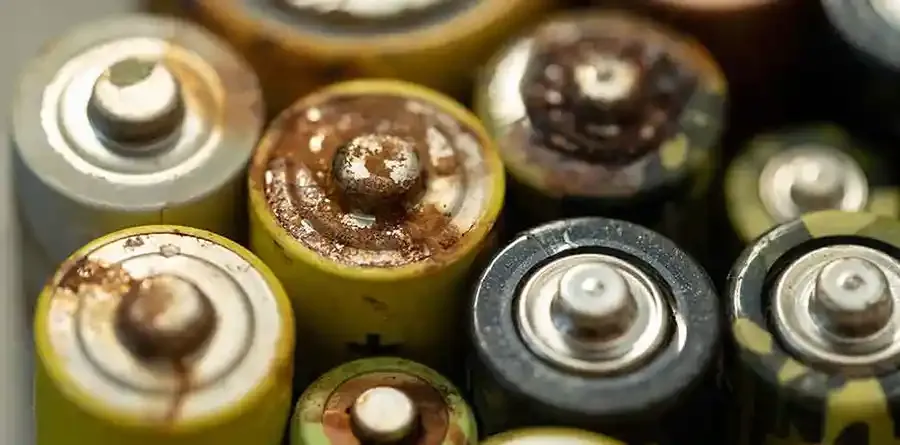Hyundai Motorstudio Senayan Park
Hyundai Motorstudio Senayan Park
Newsroom
The official news from Hyundai Motorstudio Senayan Park and a collection of innovative articles on mobility and sustainability here.
-
It Turns Out to Be Around Us, What’s Hazardous Waste?
- Hyundai Motorstudio Senayan Park Senayan Park 2022.06.02
-
Waste, no matter its form, has a bad effect to the ecosystem. For humans, waste is not only annoying because of the smell and bad appearance, but also reduces the quality of health. Meanwhile, for the environment, waste becomes a destructive pollutant.
Especially for hazardous waste, its existence is very dangerous for the surrounding area, both directly and indirectly. Due to its characteristic, the treatment that required is different. That is why it is important to understand hazardous waste because it is already around us without you realizing it.What is Hazardous Waste?
In a simple definition, hazardous waste is a type of waste that contains chemical substances which are harmful to humans and the environment. There are various forms of hazardous waste, it can be solid, liquid, and gaseous.
Hazardous waste is generated from various activities, both factories and households, which are scientifically proven to be dangerous. Though, industries are the biggest contributor.Hazardous Waste Characteristic
To be categorized as hazardous, waste must meet one of several characteristics. Some of the criteria are corrosivity, ignitability, reactivity, and toxicity. However, some types of waste are still classified as hazardous even though they don’t meet any criteria.1. Corrosivity
Corrosive waste often comes from materials with a high acidity level. Corrosive waste has a pH below 2.0 or more than 12.5. Including corrosive solid waste is an iron, metal, and other materials with a similar composition.Though, corrosive waste is not limited to solid materials, some liquid wastes also fall into this category. For example, the acidic liquid from a battery is dangerous for your hands because it can scald the skin.2. Ignitability
In certain situations, hazardous waste can produce a fire before an explosion occurs. This can happen when the waste is exposed to high temperatures of more than 60 C, or because of an internal reaction.
These characteristics can be found in solvents or used oil. Solvents can be varied, and floor cleaners are the most common. In used oil, this waste is highly flammable when exposed to high temperatures. That's why news often heard about car engines that caught fire suddenly.3. Reactivity
Hazardous waste is likely to occur due to chemical reactions in certain situations. The reactions may trigger explosions, smoke, steam, discoloration, and more. This activity occurs when chemical elements mix with H2O or when it is compressed.Cell phone batteries, whether made from sulfur or lithium, are flammable. That’s why it is not advisable to throw any unused batteries because they can trigger a chemical reaction in the form of an explosion.4. Toxicity
Hazardous waste is toxic, or at least dangerous when touched or inhaled. Waste, like lead and mercury, is often found in household products. Disposing of waste that has toxic characteristics is clearly not recommended because the chemical compounds can pollute and harm the surrounding area.Toxicity actually has a broad category because each waste has a different level of danger. Waste that is classified as carcinogenic is considered as the most dangerous waste because it triggers cancer. As you may know, cancer is one of the most common causes of death.Example of Hazardous Waste
Some examples of hazardous waste have been mentioned, but there are more. Even some hazardous waste is cyrcled in our daily activities, so it must be understood the dangers and their handling.1. Used Battery
Batteries should be disposed separately because they have chemical substances such as zinc, manganese dioxide, ammonium chloride, and carbon. Especially for rechargeable batteries, there are more chemical substances such as alkaline, nickel, and cadmium.All these chemical elements tend to be dangerous. As an illustration, cadmium will increase blood pressure, bone fragility, stomach disorders, and kidney damage. While manganese triggers nerve damage, bronchitis, Parkinson, and hallucinations.2. Bulb
Bulbs should be separated when not in use because they contain mercury and nickel. The fluorescent lamp has a mercury content of 5 grams. Mercury is a type of neurotoxin that attacks the nerves, fetus, and kidneys. In children, the effect can lower their intelligence.3. Used Oil
Some household appliances use oil to operate, which is unfortunately dangerous for the occupants. Used oil contains a lot of heavy metal elements. The effect can attack nerves, kidney damage, and cancer.4. Battery Liquid
Used battery waste contains sulfuric acid and lead which are corrosive, so they are classified as hazardous waste. Due to its nature, battery liquid can damage the skin, eyes, and respiratory system when touched or inhaled.Hazardous Waste Handling
Hazardous waste now has entered the household through various products. Due to its characteristic, hazardous waste requires special handling. It will be much more dangerous if this waste is placed together with other trash.To safely handle household waste, try storing the product in its original container. If the container is damaged, use a new container as long as it is not a food container. Store the product tightly and away from children.Also, don't mix any chemical substance with each other as this can cause a reaction. Avoid placing the product with flammable materials, and ensure the storage area is dry.If you have to buy another product, choose a small capacity for single use. Read the label on the product packaging for the instructions before doing anything.




